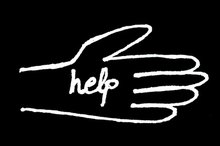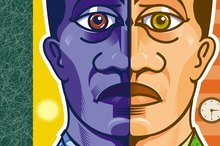Cognitive Development of a 5-Year-Old
Concrete 5-year-old thought results in some very creative, if not practical, arguments. For example, a child who does not want to brush her teeth may say, "I can't, my toothbrush is sleeping." Her world is full of magic, with living objects and new ideas waiting to be organized. Parenting a kindergartener provides an opportunity to discover how your child thinks about the world while helping her develop new concepts and thinking strategies.
Thought
The speech of a young child reveals a great deal about how he thinks. Even though a typical 5-year-old is beginning to understand that not everyone sees the world the way he does, he may still think his thoughts and wishes cause things to happen. For example, he may take credit for the addition of a new sibling because he wanted a playmate, or blame himself for a family challenge such as divorce. He also may firmly believe in magic and that his toys are alive since his imagination is likely more developed than his ability to think logically. A 5-year-old's imaginary play and self-talk both suggest that he is watching and learning a great deal about social interactions in terms of their relationship to him. As he matures, your child will develop more perspective about how he fits into his family and the community.
- The speech of a young child reveals a great deal about how he thinks.
- Even though a typical 5-year-old is beginning to understand that not everyone sees the world the way he does, he may still think his thoughts and wishes cause things to happen.
Reasoning and Problem Solving
How to De-Escalate Aggressive Behavior in the Developmentally Disabled
Learn More
Limitations in a 5-year-old's ability to understand multiple attributes of things, rudimentary understanding of time, and a tendency to view change as permanent often result in over-simplified, sometimes magical, reasoning and problem solving. For example, a child who wants to continue playing past her bedtime might solve the problem by stating that the clock is broken, or is lying, so she shouldn't have to go to bed. A single clock is the determining factor in her bedtime, not her fatigue, the fact that other clocks show it is bedtime, or the fact that it is dark outside.
Conceptual Awareness
Kindergarten-aged children rapidly acquire new concepts including early phonetic understanding and beginning reading ability, emergent math ideas and symbolic thinking skills 3. These skills represent your child's increasing understanding of the world. However, most 5-year-olds are just beginning to think logically and understand abstract ideas. Because of this, your child is likely to seek active, hands-on opportunities to test his new ideas and thinking skills. For example, he may enjoy testing his new discovery that the number he stops on tells him how many there are of something by counting sets of toys and household objects. As he moves closer to 6 years old, his ability to understand ideas without physically experiencing them will expand and develop more fully.
- Kindergarten-aged children rapidly acquire new concepts including early phonetic understanding and beginning reading ability, emergent math ideas and symbolic thinking skills 3.
- However, most 5-year-olds are just beginning to think logically and understand abstract ideas.
Organizing and Classifying Information
Positive & Negative Symptoms of Schizophrenia
Learn More
Five-year-olds spend a lot of time learning to organize and sort information into sets. However, they frequently have difficulty understanding multiple features. As a child simplifies the many attributes of an item she seeks to understand, she may rely on a single one instead of studying the whole. In addition to problems with oversimplification, deciding which features to focus on as the determining factor represents a significant challenge for most preschoolers and kindergarteners. For example, a 4-year-old child interested in animals may decide that fur is their salient feature and reject lizards, fish and birds as "animals." By 5 she may understand that all pets, including the class lizard and fish, are animals, but reject bees because they sting. Games and activities which stress multiple descriptive features, such as "I Spy" and "20 Questions," help children learn to recognize and appreciate multiple features of things.
- Five-year-olds spend a lot of time learning to organize and sort information into sets.
- Games and activities which stress multiple descriptive features, such as "I Spy" and "20 Questions," help children learn to recognize and appreciate multiple features of things.
Related Articles
References
Writer Bio
Meredyth Glass has been writing for educational institutions since 1995. She contributes to eHow in the areas of parenting, child development, language and social skill development and the importance of play. She holds a Master of Science in speech, language pathology from California State University, Northridge and a Bachelor of Arts in anthropology from California State University, Northridge.









